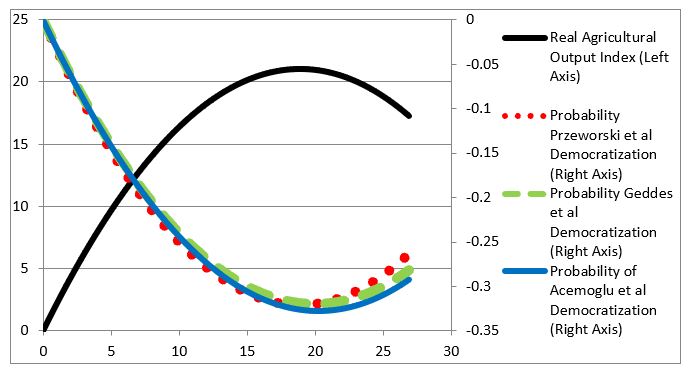CEPR’s policy portal VoxEU has published the article “Democratic tipping points” by Economics alum Adilzhan Ismailov ’15 and Antonio Ciccone, professor at the Barcelona GSE and the UPF Economics department, where Adilzhan is currently doing his PhD.
VoxEU promotes “research-based policy analysis and commentary by leading economists.” The site receives about a half million page views per month.
Article summary
Persistence of democratisation following transitory economic shocks plays an important role in the theory of political institutions. This column tests the theory of democratic tipping points using rainfall shocks in the world’s most agricultural countries since 1946. Negative rainfall shocks have a strong and transitory effect on agricultural output, but a persistent positive effect on the probability of democratisation even after ten years.
Key conclusions
The recent history of democratic (non-)transitions in the world’s most agricultural countries indicates that transitory events can have enduring effects on democratic institutions. When lower rainfall led to below-average agricultural output in these countries, countries ruled by authoritarian regimes were more likely to democratise and more likely to be democratic ten years later.
The shape of the effect of rainfall on the probability of democratisation indicates that the effect is through agricultural output. The agricultural economics literature finds an inverted-U-shaped effect of rainfall on agricultural output. In the theory of Acemoglu and Robinson (2001, 2006) we build on, transitorily lower output raises the probability of democratisation, and transitorily higher output lowers the probability of democratisation. Hence, the inverted-U-shaped effect of rainfall on agricultural output should translate into a U-shaped effect of rainfall on the probability of democratisation. We find this to be the case. Moreover, our results indicate that rainfall shocks tend to produce the largest change in the probability of democratisation when the estimated effect of rainfall on agricultural output is largest.
Figure. Effect of rainfall on real agricultural output and on the probability of democratisation


Adilzhan Ismailov ’15 is a PhD candidate at GPEFM (UPF and Barcelona GSE). He is an alum of the Barcelona GSE Master’s in Economics.
